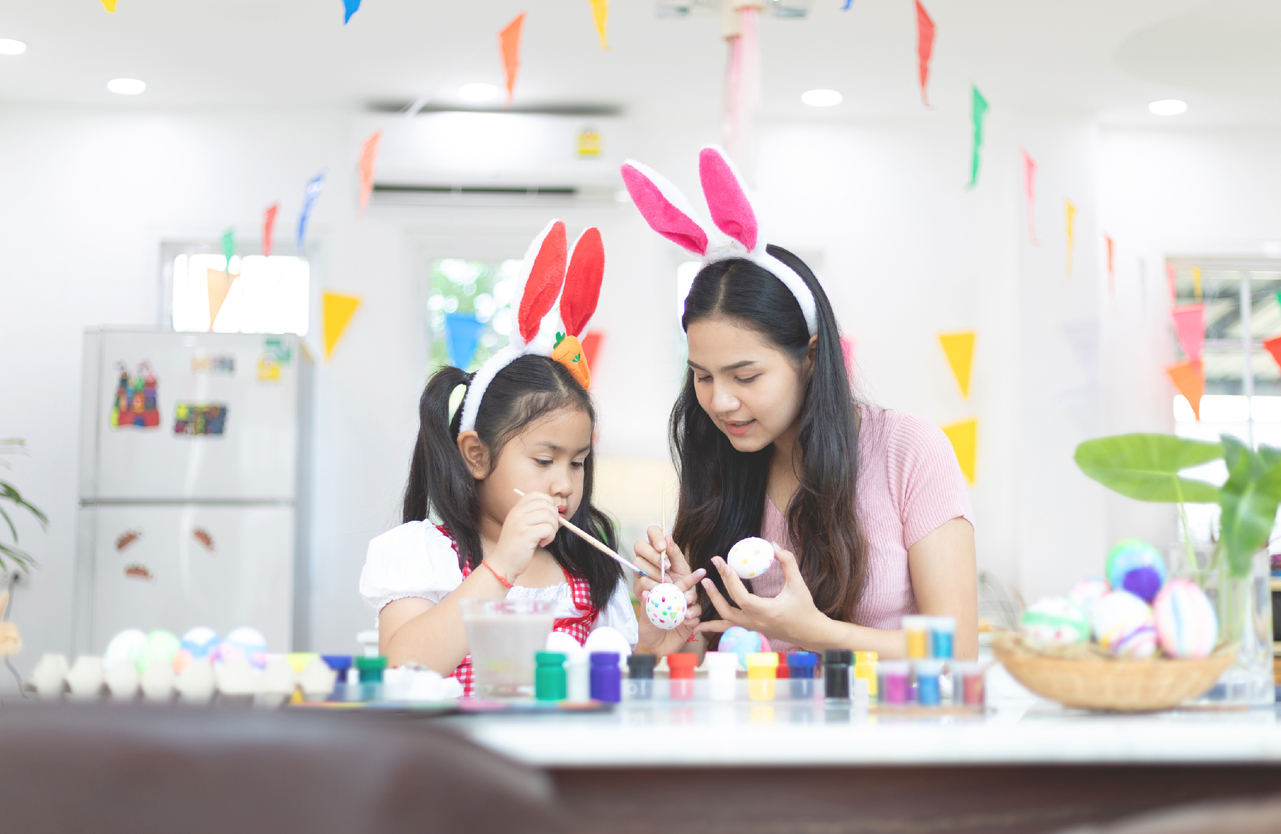International Colour Day is a vibrant celebration that takes place annually on March 21st. It’s a day dedicated to appreciating the importance of colour in our lives. For children, this day presents a unique opportunity to learn about the cultural, artistic, and emotional significance of colours. It’s a chance to explore the world of colour in a fun and educational way.
Nannies, parents, and educators can play a pivotal role in this exploration. They can organize a variety of colour-themed activities that are both engaging and informative. In this article, we’ll share some creative ideas for International Colour Day activities for kids. We’ll explore how nannies can bring these activities to life, the purpose of the celebration, and how to make the day a memorable one.
The Purpose of Celebration: Why We Love Colors
International Colour Day is more than just a celebration of hues. It acknowledges the profound impact colours have on our daily lives.
Colours influence our emotions, creativity, and even our thoughts. They play a crucial role in art, design, and human psychology.
Different cultures worldwide have unique interpretations of colours, adding to their richness and diversity. This celebration shines a light on these varied meanings.
The purpose is also to foster an appreciation for the aesthetic and emotional value of colours. By exploring these aspects, we develop a deeper understanding of the world.
For kids, appreciating colours can be a joyful educational experience. It’s about engaging their curiosity and encouraging creative expression.
Through storytelling, art, and play, children can explore and express their individuality. International Colour Day provides the perfect backdrop for these enlightening adventures.
Nanny Brings to Workshop Class: Creative Learning
A nanny can enrich a child’s experience by leading a color-themed workshop class. These classes can be fun and educational, sparking a child’s imagination.
Workshops allow children to experiment with colors hands-on. They learn by doing, which boosts creativity and retention.
Nannies play a central role by guiding the activities and encouraging exploration. They can tailor sessions to children’s interests and abilities.
In a workshop, kids might experiment with color mixing and explore the color wheel. This hands-on learning helps them grasp complex concepts easily.
Color workshops can cover a range of engaging activities, such as:
– Painting and drawing
– Making color collages
– Creating DIY crafts using recyclable materials
Activities like these are not just playful but also teach important skills. They engage children in meaningful ways, enhancing both cognition and creativity.
Crafting with Colors
Crafting provides a fantastic opportunity for kids to explore hues. Simple activities, like making colored paper masks, are ideal.
Children can blend colors, learning about primary and secondary shades. This tactile learning is both fun and insightful.
Kids love crafting with clay too. Mixing colored clays helps them understand color theory tangibly.
Through crafting, children discover different textures, improve motor skills, and develop artistic expression. Creativity thrives in such environments.
The Science of Colors
Introducing kids to the science of colors can be exciting. Simple experiments, like splitting light with a prism, reveals the colors of the rainbow.
Such activities explain the physics of color in an engaging way. Children witness science in action, sparking their curiosity.
Understanding light and color helps kids connect with nature. They learn how different hues appear in the environment.
Exploring the science behind colors fosters a love for learning. It nurtures their scientific thinking and curiosity, which will last a lifetime.
Activities for Your Kids and Nanny in Thailand
In Thailand, unique traditions offer vibrant ways to celebrate International Colour Day. Engage your kids in cultural activities that highlight rich local color palettes.
Your nanny can coordinate enriching outings and experiences. These adventures foster learning and appreciation for diverse cultures and histories.
Consider visiting bustling local markets. These are filled with vibrant textiles and colorful foods, perfect for teaching kids about color diversity.
Thailand’s festivals, like Loy Krathong, offer a spectacle of colors. Attending these can provide insights into the cultural significance of colors.
Collaborative activities you can plan include:
– Participating in traditional Thai crafts
– Creating colorful lanterns
– Dressing in traditional, vibrant costumes
These activities can expand children’s horizons and deepen their understanding of global art and culture. Immersing them in Thailand’s vibrant settings enriches their appreciation of color globally.
Exploring Thai Culture Through Colors
Thai culture offers a kaleidoscope of colors. Traditional dances and outfits are wonderfully vibrant.
Incorporating cultural learning into International Colour Day enhances its purpose. Children gain insights into the symbolism behind each hue.
A nanny can teach kids by showcasing colorful Thai festivals. This includes understanding how colors represent elements of heritage.
Embracing Thai cultural practices helps children appreciate diversity. It creates an understanding and respect for other cultures’ aesthetics.
Visiting the Art Gallery: A Visual Feast
A trip to an art gallery provides a stunning visual experience. Artworks reveal the powerful use of color in storytelling.
Galleries offer kids a chance to see various art forms. Observing paintings can spark imagination and dialogue about color usage.
Nannies can encourage interactive discussions. They guide children in noticing how colors affect emotion and mood in art.
Visiting galleries fosters critical thinking and artistic appreciation. It’s a gateway for kids to explore art’s universal language.

Teaching Your Kids About the Color Meaning by Your Nanny
Nannies have a unique opportunity to teach color meanings. Through interactive activities, they can spark curiosity and learning.
Colors carry diverse cultural and emotional significances. Teaching children this can broaden their perspectives.
Your nanny can create engaging lessons around color symbolism. These lessons can be both educational and fun.
Activities can include:
– Creating a color wheel to explore primary and secondary colors
– Discussing cultural associations of colors
– Exploring personal preferences and why certain colors resonate
These activities enhance understanding of the psychological impact of colors. They also promote empathy and appreciation for diversity.
Engaging in color education fosters creativity and cognitive development. The exploration of color meanings opens up a world of learning and connection.
Storytelling and Color Symbolism
Storytelling is a powerful tool to teach kids about color symbolism. It creates a vivid context for understanding complex ideas.
Your nanny can weave tales where colors play key roles. Stories might include characters defined by colors, representing emotions or traits.
Books that use color imagery can amplify these lessons. Discussing stories can help kids relate colors to feelings and themes.
Ultimately, storytelling allows abstract concepts to become tangible. It’s an effective bridge between knowledge and creativity.
Colorful Emotions: Understanding Feelings Through Colors
Colors evoke various emotions and reactions. Teaching kids about these connections can be both enlightening and therapeutic.
Nannies can organize art activities where kids express feelings using colors. This encourages emotional literacy and creative expression.
Kids can learn why they feel calm with blues or excited with reds. Discussing these feelings can increase their emotional awareness.
Music and movement activities with colors can also illustrate these concepts. Movement often mirrors the emotion colors evoke.
Understanding emotions through colors supports emotional intelligence. It prepares children to articulate feelings in creative ways.
Engaging Outdoor and Indoor Color Activities
Color-themed activities can keep children engaged and excited. They stimulate both the mind and body. A blend of outdoor and indoor exercises can cater to different interests and weather.
Outdoors, colors abound in nature’s palette. A scavenger hunt can turn a regular walk into an adventure. Children can collect colorful objects, such as leaves or flowers.
Indoors, creative projects can extend learning. Cooking and art can infuse color into everyday activities.
Consider these indoor activities:
– Crafting with colored paper or clay
– Baking with vibrant ingredients
– Creating a painted art piece
For outdoor fun, try:
– A color photography walk
– Observing colors in plants and animals
– Playing a game of color tag
These activities engage kids physically and cognitively. They also encourage collaboration and communication.
Blending these activities enriches learning experiences. They celebrate the diversity and joy found in colors.
Color Scavenger Hunt in Nature
A color scavenger hunt is a dynamic, educational activity. It encourages children to engage actively with their surroundings.
Kids can be given a list of colors to find in nature. They search for items that match each hue, such as red berries or green leaves.
This activity enhances observational skills. It helps children appreciate the variety of colors in the environment.
Nannies can guide this adventure, adding fun challenges. Perhaps, ask kids to identify the natural item and its habitat.
The excitement of finding each color fosters curiosity and learning. It’s an excellent way to combine physical activity with color education.
Colorful Kitchen Creations
The kitchen offers a canvas full of colors. Cooking can be an educational yet entertaining endeavor for kids.
Nannies can plan recipes featuring colorful fruits and vegetables. Kids can help by chopping or mixing ingredients.
Each color in food can represent nutritional benefits. A discussion on this topic can teach kids about healthful eating.
Baking offers another avenue for creativity with colors. Decorate cookies or cakes with vibrant icing or sprinkles.
Through cooking, children learn about measuring, following instructions, and teamwork. They see firsthand how colors transform during cooking.
Ultimately, these colorful kitchen activities make learning about nutrition deliciously fun.
Wrapping Up International Colour Day with a Festive Celebration
Celebrating International Colour Day can end on a high note. A festive gathering helps to conclude this vibrant day. Invite friends and family to join in the fun.
Consider organizing a color-themed party. Decorate with streamers and balloons in various hues. Everyone can dress in their favorite colorful attire.
Celebrations can be simple yet significant. Encourage guests to bring colorful crafts or foods. It adds a personal touch to the gathering.
This closing celebration reinforces the joy of learning and playing with colors. It leaves everyone with warm, colorful memories.
A Rainbow of Fun: Party Ideas
A party filled with colors can be truly enchanting. Create an inviting atmosphere using multicolored decorations. A rainbow cake makes for a stunning centerpiece.
Organize games that involve color recognition. Try a color relay race or guess-the-color games. Both can be fun and informative.
Craft corners with supplies of all shades let creativity flow. Offer materials like colored paper and paint. Kids can create take-home mementos.
A photo booth with bright props can capture joyful moments. It adds a playful element to the gathering. These vivid activities ensure a memorable celebration for everyone.
Reflecting on the Day’s Colorful Journey
As the day concludes, take a moment to reflect. Discuss the day’s favorite activities with the kids.
Encourage children to share what they learned. This reflection reinforces the lessons and joy experienced. It sets the stage for future adventures in color exploration.
Chack out Nanny >>> Kiidu Service Nanny








